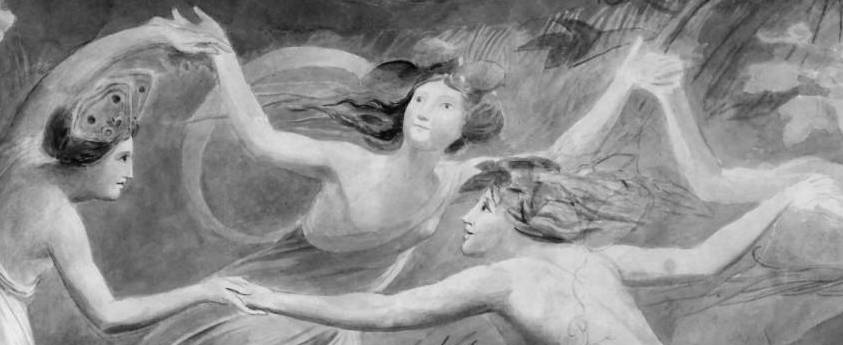Rafael Nuñez and Kensy Cooperrider, ‘The Tangle of Space and Time in Human Cognition’, Trends in Cognitive Sciences, 17 (2013), 220-9.
This essay explores the ‘mosaic’ of time perception, and the different ‘spatial construals of time’ (SCTs; e.g. something earlier is behind you; later is ahead) with which human beings habitually make sense of order and duration. It makes a distinction between D-time (deictic – then) and S-time (sequence – after…). It spends a lot of time on data about the contrasting SCTs that have been observed in different cultures. Ongoing efforts to investigate ‘SCTs in the brain’ will need to take account of these, and may help to explain them. The main argument is an emphasis on the ‘patchwork’ nature of time perception. Time is not monolithic.
It is not difficult to think of ways in which literature engages with time perception. Narratives speed up and slow down, and offer ways of representing the experience of sequence and duration. If (as Nuñez and Cooperrider discuss) one way of understanding SCTs is via embodied conceptual metaphor (as in the work of ), then literature, where metaphors do special work and are given special attention, may be a place to ponder where the past is, and so on.
*
I would like to sketch a couple of other literary ways in to the topic. Might poetic form be a kind of SCT? Some rhyme schemes and stanza shapes configure time quite differently from one another. The one that comes to mind is the . With more lines than other common forms, and an extra couple of syllables in the last line, it often seems to distend duration.
Religion provides a context for the thinking about time we might see here. The extra line and the extra syllables create a space for a further turn, of providence perhaps, or of doubt (it does many different things). They may even evoke the ultimate, the last judgment and the next world beyond. In The Faerie Queene there is always something , and the stanza form could be seen as a spatial construal of this attitude towards time.
Poetic form, then, might be a complex network of SCTs, often probing the problems of spatial construal itself.
*
I would like to be a bit more specific about another way in which literature might contribute to an understanding of SCTs. By depicting interactions between different views of time, it may test the possibilities of space as a metaphor for time. Science fiction can stretch us in this way (aliens without childhoods, etc.), but actually the idea is old: from the very beginnings of western literature immortal gods and mortal humans have shared the reader’s attention: how different is the shape of time if you are immortal?
I want to explore this in reduced form, by thinking about Shakespeare’s A Midsummer Night’s Dream. The fairies in this play are composed out of classical and folk-take elements, and it is not straightforward to characterise their lifespans, and so on. But they call humans ‘mortals’, and the implication must be that they inhabit time in a different way.
I think the fairies have something like a distinctive SCT to match. Or rather, that they habitually turn to a particular shape (a circle) around both D-time and S-time. Fairies like to dance in rings, and they like to circle the earth. Puck promises to put a girdle round it in forty minutes, and Oberon says that he and Titania ‘’. When Titania lies down with Bottom, she imagines herself capturing the moment, and also the period of sleep, in natural circles:
So doth the woodbine the sweet honeysuckle
Gently entwist; the female ivy so
Enrings the barky fingers of the elm.
O, how I love thee! How I dote on thee!
The Oxford English Dictionary credits Shakespeare with inventing word and/or usage for ‘entwist’ and ‘enring’ here. His vocabulary has to adapt to a distinctive way of thinking – to a distinctive SCT.
I don’t think it’s as simple as saying ‘for immortals, time is cyclical’. It might be helical. But the difference between these things is a sense of forward progression, and that’s a mortal way of thinking about time. We are only getting a glimpse.
In the final words of the play, the fairies, still interacting with the mortal world, promise to trip and frolic and stray. Perhaps it’s not that time is a circle for them, but that it’s a strange, meandering dance.
The play, then, offers us the chance to recognise a way of construing time that does not fit the usual linear human patterns. This helps us recognise the richness of the mosaic that Nuñez and Cooperrider argue for. For fairies and gods (but also for mayflies, sequoias, viruses, ) time is surely not before or after, ahead or behind, or just there, as it is for us.

